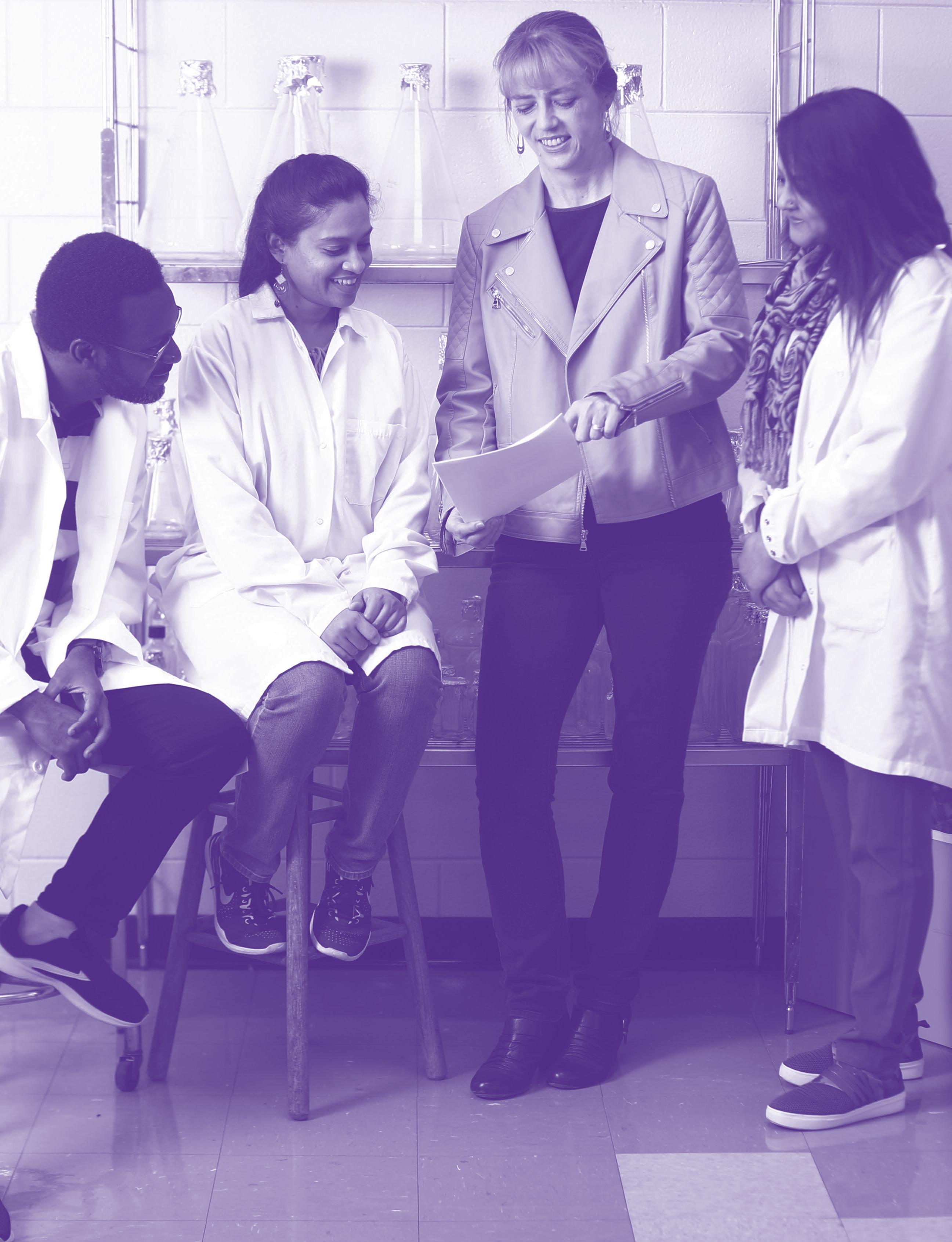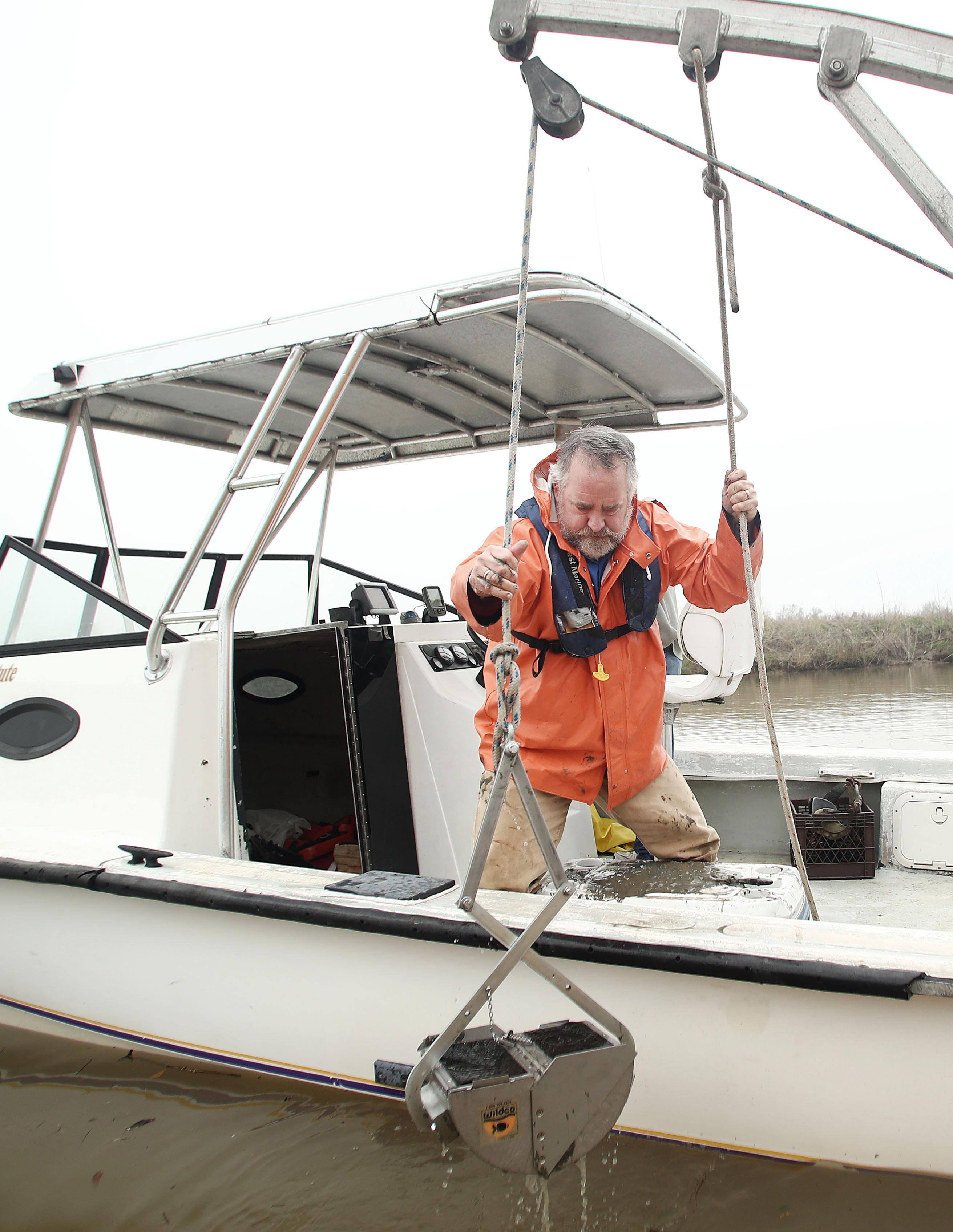
6 minute read
Research
RULES OF EXPLORATION
How are we preparing to explore ecosystems on other planets?

Peter Doran, John Franks Chair in LSU’s Department of Geology & Geophysics and veteran of more than 20 expeditions to the Arctic and Antarctica, is taking his expertise in studying icy environments to develop policies that could protect us against possible contamination from solar system exploration.
In 2018, Doran became a member of the international Panel for Planetary Protections (PPP), a group responsible for developing policies and procedures to govern outer planetary exploration. Doran’s decades of Arctic research made his PPP membership possible. His research focuses on modern hydrological and biogeochemical processes in polar lake systems like Antarctica’s Dry Valleys, a row of largely snow-free valleys with an ecosystem similar to Mars.
A number of private organizations are gearing up for human missions to Mars, but Doran warns that they may not be as concerned about the science.
“This is an exciting time for Mars exploration, but we do not have rules in place to protect against contamination,” said Doran. “This is about protecting the science and protecting humans.”
The role of the PPP is to set guidelines to thwart any negative impact of outer planetary missions, including possible effects of contamination of planets other than the Earth; of planetary satellites within the solar system by terrestrial organisms; and of contamination of the Earth by materials returned from outer space carrying potential extraterrestrial organisms.
LIPTON AWARDED $1 MILLION MURI GRANT
Robert Lipton, Nicholson Professor in LSU’s Department of Mathematics, and researchers at the California Institute of Technology, University of Chicago, Northwestern University, and Carnegie Mellon University are collaborating on research that will help increase understanding of continuum mechanics of granular materials from the macroscopic scale to microscopic scale.
This research is funded by a highly competitive Multidisciplinary University Research Initiative (MURI) grant awarded by the Army Research Office within the U.S. Department of Defense. Lipton will receive $1 million of the total $5 million grant over five years.
This research will attempt to bridge the gap between microscopic and macroscopic particles in continuum, and the sheering effect of forces being applied to those particles.
“Understanding the macroscopic effects of loads due to vehicles or fissures in geological materials, such as the San Andres fault, and applying forces to these things changes the geometry of the particles, it changes the relative spacing, but it can also crush the particles,” Lipton said.
As time progresses, Lipton’s work will morph from understanding simple grain geometry on elastic properties at the continuum level to more complicated shapes and inelastic properties, as well as what is the critical load for sheer based on the shapes and morphology of particles at the microscale, and the force applied. The impact of Dr. Lipton’s research will be seen in better earthquake prediction, as well as civil engineering improvements.
UNDERGRADUATE RECOGNITION

The LSU Discover Undergraduate Research Program launched the Distinguished Undergraduate Research Award. This designation recognizes the achievements of outstanding undergraduates who participate in a track of educational and research activities leading to a final and public presentation or publication of a faculty-mentored undergraduate scholarly project. Ten College of Science students were recognized among the 2019 inaugural class.
Michael Brands: Biological Sciences
Sarah Cohen: Biochemistry and Sociology
Joseph DeCorte: Biochemistry
Amber DePoy: Microbiology
Logan Hart: Mathematics
Ryan Hoffman: Biological Sciences
Tabitha Kearns: Biological Sciences
Jeffrey Lemoine: Computer Science and Biochemistry
Corey St. Romain: Biological Sciences
Sadie Thompson: Biological Sciences
RESEARCH FUNDING
$28 MILLION +
The LSU College of Science receives more than $28 million in research funding each year. More than 60 percent of this support comes from federal funding agencies, including the National Science Foundation, National Institutes of Health, the Department of Energy and the Department of Defense.
CAN WE BREAK THE INTERNET WITH QUANTUM TECHNOLOGY?

LSU quantum physicists Jonathan Dowling and Ward Plummer
Teleportation — the theoretical transfer of matter or energy from one point to another without moving through physical space — is a staple of the science fiction realm. But in the world of quantum physics, it’s now becoming a reality.
In 2017, a group of Chinese scientists not only managed to beam the quantum state of an entangled photon into orbit, but they also showed that one can build a practical system for long-distance quantum communications.
These particles jumping through space conjured up questions from wide-eyed sci-fi fanatics back on Earth: Could Star Trek transporters be far behind? Not necessarily — this real-world trick, called quantum teleportation, probably won’t ever send your body from one place to another. It’s essentially a super-secure data transfer, which is tough to do with the jumble of code that makes us human.
“Teleportation…no it’s not exactly like Star Trek,” joked Jonathan Dowling, the Hearne Chair of Theoretical Physics at LSU and an expert on quantum sensing. “We don’t have the ability to teleport human beings yet, but we can teleport photons, and that’s something.”
Most recently, LSU received a special invitation to the White House on Friday, May 31, for an academic roundtable on innovation in quantum information science, or QIS.
But Dowling has worked with quantum technologies for years, watching the technology evolve from theory to reality. In 2018, the physicist and his colleagues received a multi-million-dollar National
Science Foundation grant that would enable them to develop ways to share quantum information through photonic integrated circuits, which encode information on light particles rather than electricity.
“The most resource-efficient method to move quantum data around is to teleport it,” Dowling said, “And the way we do that is through light. Photons have a polarization, which means you can polarize the photons horizontally or vertically to block out certain types of light.”
A quantum network would be an almost 100 percent secured communications grid, and no one without access would be able to hack it. If someone did gain access, it would immediately be obvious. Therefore, such a communication system would be impossible to eavesdrop on without alerting the users, which would make online communications much more secure. And the way we achieve that is through entangled light particles.
Two entangled particles behave like a pair of twins, regardless of the real distance. If the property of a particle is determined by a measurement, the quantum state of the partner particle is also determined immediately. If someone were to mess with one particle, the other would immediately react, disrupting the connection. This would create an un-hackable internet.
But because the shift in technological advances is happening so quickly, Dowling and his students are working to develop a protocol by analyzing quantum computers and quantum networks and put restrictions on the rate and efficiency of data transfer. “What are the different protocol areas we need to examine?” he questioned. “Teleportation is one because that is a key mechanism for routing information around the Internet. Security and distributing quantum computing are others.”
So what does this mean for the future? “I’d predict that within the next ten years, we will have a computer that no classical computer, all the classical computers on earth, or in the universe, can simulate what it is doing,” he said.
A GATHERING OF QUANTUM EXPERTS
In February, Dowling and Ward Plummer, LSU Boyd Professor of Physics and renowned expert on quantum materials, gathered scholars from across the U.S. for a two-day workshop at the LSU Center for Computation and Technology to map local and national expertise and build relationships for various research projects in the ongoing Quantum Race.










